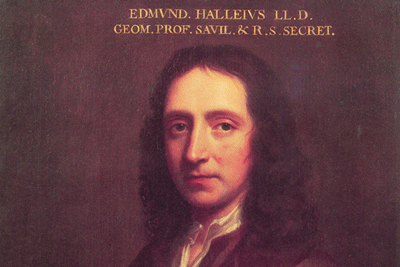 Edmond Halley is a prominent English astronomer, mathematician, physicist and meteorologist. Halley became famous for the “Halley's Comet” observation. He was the second English astronomer next to John Flamsteed.
Edmond Halley is a prominent English astronomer, mathematician, physicist and meteorologist. Halley became famous for the “Halley's Comet” observation. He was the second English astronomer next to John Flamsteed.
Halley was born in the Haggerston town in Shoreditch, England. His father, Edmond Halley Sr., came from a wealthy family of soap makers in London. Since childhood, he became very interested with mathematics. In 1763, He entered the prestigious Queen's College in Oxford to pursue a science and math degree. Halley already published a couple of newspaper articles about the sunspots and solar system during his stay at Queen's. In 1676, He decided to leave Oxford to visit the Saint Helena Island located around the Atlantic sea. During his stay at the island, Halley studied the appearance of stars from the Southern Hemisphere using a 24-ft. aerial telescope.
In 1678, He returned to England and eventually became an active member of the Royal Society. His colleague, astronomer Johannes Hevelius, was questioned by the Royal Society's Robert Hooke in making use of the telescope to counteract the arrangement of stars. However, Halley defended Hevelius from Hooke's criticisms by presenting verifications of Hevelius' initial observations. During the same year, he wrote a book entitled “Catalogus Stellarum Australium”. The book contains more than 300 Southern Hemisphere stars observations. Halley finished his MA Degree at Oxford and coincided with his election from the Royal Society.
In 1862, Halley married Mary Tooke and lived together with three children in Islington, England. He spent most of his time in conducting in-depth studies on lunar observations. In August 1864, He went to Cambridge to meet and discuss his study on “Kepler's Planetary Motion Law” with Sir Isaac Newton. The latter convinced Halley to write a book entitled “Prinicipia Mathematica Philosophae Naturalis” in 1687. He made use of his personal money to publish the book worldwide.
Halley became a devoted member of the Royal Society until his death in 1742. His grave is currently situated at the St. Margaret Church along with fellow astronomers Nathaniel Bliss and John Pond. The two astronomers were also from the Royal Society.
